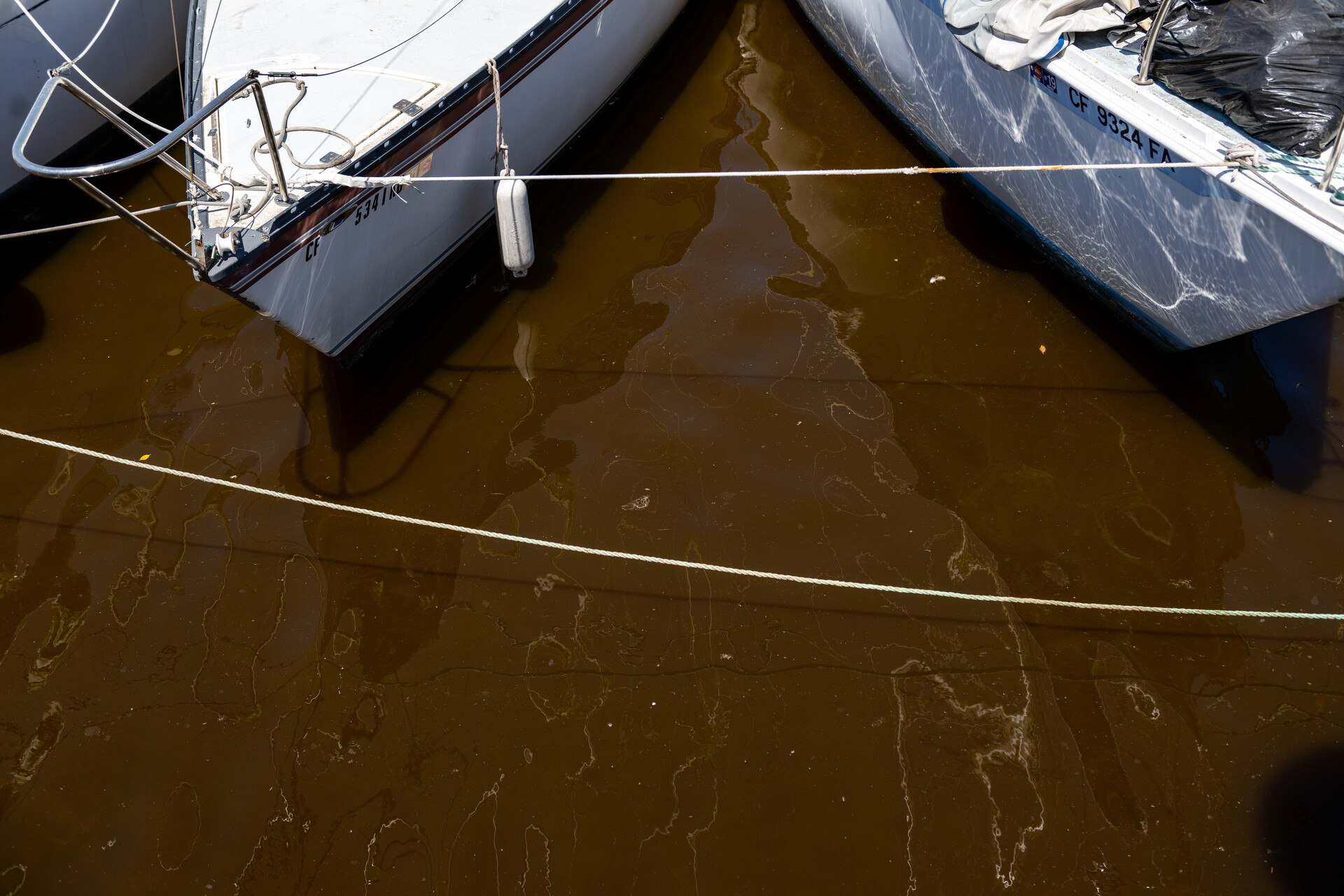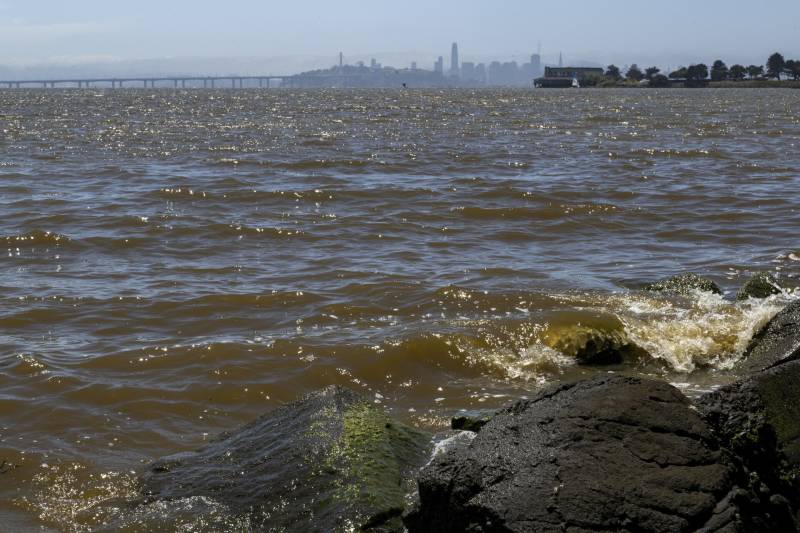A red tide that has left a light-brown sheen on the water along parts of the East Bay shoreline is the same type of toxic algae bloom that killed thousands of fish in the San Francisco Bay last summer, a local environmental group warned on Monday.
“We have confirmed with our partners that it’s the same species as last year,” Eileen White, executive officer of the San Francisco Regional Water Quality Control Board, said at a Monday afternoon press conference. She said the organism has so far been found in the bay waters near Emeryville, Albany, the Berkeley Marina, Richardson Bay and Belvedere Cove, as well as off the Marin County coast, near Muir Beach.
“The good news is we have not seen any marine animal deaths as a result of this algae bloom,” she said.
San Francisco Baykeeper’s pollution hotline lit up late last week with calls about the tea-colored water seen stretching from Emeryville to Albany, said Jon Rosenfield, the group’s senior scientist.
“Two years in a row is quite alarming,” he said, noting that it remained unclear how bad the bloom will get. “There’s really nothing that people can do to stop a bloom like this once it’s started. It just has to burn itself out.”
Red tides are fueled by elevated levels of nitrogen and phosphorus expelled into the water as a byproduct of treated sewage from wastewater treatment plants — leaving nutrients that algae love to nibble on. Such conditions can cause the algae to grow out of control and sometimes form a rust-colored hue.

Not every algal bloom is harmful, some can even be beneficial to marine habitats. But others produce deadly blooms — as did the one that emerged last August. That algae species, identified as Heterosigma akashiwo, and also believed to be the cause of the current bloom, killed an untold number fish over a matter of weeks, their rotting, fetid carcasses littered across Bay Area shorelines, including the banks of Lake Merritt.
The algae species emits a toxin that’s especially harmful to fish. It can also spur a biological reaction that depletes oxygen levels in the water, acerbating the marine death toll.

